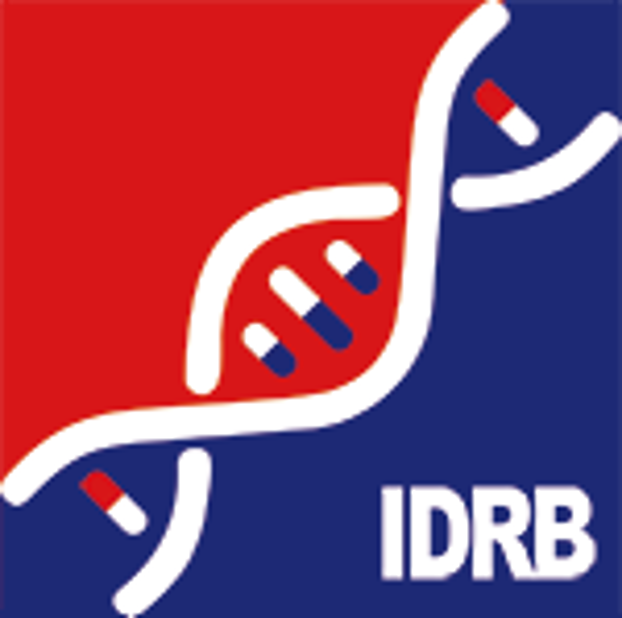Target Information
| Target General Infomation | |||||
|---|---|---|---|---|---|
| Target ID |
T88185
|
||||
| Former ID |
TTDC00317
|
||||
| Target Name |
Nicotinic acid receptor
|
||||
| Synonyms |
G-protein coupled receptor 109A; G-protein coupled receptor HM74A; GPR109A; HM74A; NIACR1; Niacin receptor 1
|
||||
| Target Type |
Successful
|
||||
| Disease | Lipid disorder; Cardiovascular disease [ICD9: 272, 390-459; ICD10: E78, I00-I99] | ||||
| Function |
Acts as a high affinity receptor for both nicotinic acid (also known as niacin) and (d)-beta-hydroxybutyrate and mediates increased adiponectin secretion and decreased lipolysis through g(i)-protein-mediated inhibition of adenylyl cyclase. This pharmacological effect requires nicotinic acid doses that are much higher than those provided by a normal diet. Mediates nicotinic acid-induced apoptosis in mature neutrophils.
|
||||
| Target Validation |
T88185
|
||||
| Drugs and Mode of Action | |||||
| Drug(s) | Vitamin B3 | Drug Info | Approved | Lipid disorder; Cardiovascular disease | [1] |
| MK-0354 | Drug Info | Phase 2 | Discovery agent | [2], [3] | |
| Inhibitor | 1H-Pyrazole-3-carboxylic acid | Drug Info | [4] | ||
| 2-(2-(4-tert-butylphenoxy)acetamido)benzoic acid | Drug Info | [5] | |||
| 2-(3-(naphthalen-2-yl)propanamido)benzoic acid | Drug Info | [5] | |||
| 2-(3-biphenyl-4-yl-propionylamino)-benzoic acid | Drug Info | [6] | |||
| 2-(4-phenylbutyl)pyrido[2,3-d]pyrimidin-4(3H)-one | Drug Info | [7] | |||
| 2-(6-phenylhexyl)pyrido[2,3-d]pyrimidin-4(3H)-one | Drug Info | [7] | |||
| 2-(cinnamyloxy)pyrido[2,3-d]pyrimidin-4(3H)-one | Drug Info | [7] | |||
| 4,5,6,7-Tetrahydro-1H-indazole-3-carboxylic acid | Drug Info | [4] | |||
| 5-(3-Chloro-benzyl)-1H-pyrazole-3-carboxylic acid | Drug Info | [4] | |||
| 5-(3-Phenyl-propyl)-1H-pyrazole-3-carboxylic acid | Drug Info | [4] | |||
| 5-(4-Chloro-benzyl)-1H-pyrazole-3-carboxylic acid | Drug Info | [4] | |||
| 5-Benzyl-1H-pyrazole-3-carboxylic acid | Drug Info | [4] | |||
| 5-Butyl-1H-pyrazole-3-carboxylic acid | Drug Info | [4] | |||
| 5-Isopropyl-1H-pyrazole-3-carboxylic acid | Drug Info | [4] | |||
| 5-Phenethyl-1H-pyrazole-3-carboxylic acid | Drug Info | [4] | |||
| 5-Propyl-1H-pyrazole-3-carboxylic acid | Drug Info | [4] | |||
| ISONICOTINIC ACID | Drug Info | [4] | |||
| MK-0354 | Drug Info | [8] | |||
| Agonist | Vitamin B3 | Drug Info | [1] | ||
| References | |||||
| REF 1 | Hakozaki T, Minwalla L, Zhuang J, Chhoa M, Matsubara A, Miyamoto K, Greatens A, Hillebrand GG, Bissett DL, Boissy RE: The effect of niacinamide on reducing cutaneous pigmentation and suppression of melanosome transfer. Br J Dermatol. 2002 Jul;147(1):20-31. | ||||
| REF 2 | ClinicalTrials.gov (NCT00337415) MK0354 Clinical Efficacy and Tolerability Study (0354-004). U.S. National Institutes of Health. | ||||
| REF 3 | (http://www.guidetopharmacology.org/) Nucleic Acids Res. 2015 Oct 12. pii: gkv1037. The IUPHAR/BPS Guide to PHARMACOLOGY in 2016: towards curated quantitative interactions between 1300 protein targets and 6000 ligands. (Ligand id: 5784). | ||||
| REF 4 | J Med Chem. 2003 Aug 28;46(18):3945-51.Pyrazole derivatives as partial agonists for the nicotinic acid receptor. | ||||
| REF 5 | Bioorg Med Chem Lett. 2008 Sep 15;18(18):4963-7. Epub 2008 Aug 14.Molecular modeling aided design of nicotinic acid receptor GPR109A agonists. | ||||
| REF 6 | J Med Chem. 2007 Dec 13;50(25):6303-6. Epub 2007 Nov 10.Discovery of biaryl anthranilides as full agonists for the high affinity niacin receptor. | ||||
| REF 7 | Bioorg Med Chem Lett. 2010 Sep 15;20(18):5426-30. Epub 2010 Jul 29.Pyrido pyrimidinones as selective agonists of the high affinity niacin receptor GPR109A: optimization of in vitro activity. | ||||
| REF 8 | Bioorg Med Chem Lett. 2010 Aug 1;20(15):4472-4. Epub 2010 Jun 10.GPR109a agonists. Part 2: pyrazole-acids as agonists of the human orphan G-protein coupled receptor GPR109a. | ||||
If You Find Any Error in Data or Bug in Web Service, Please Kindly Report It to Dr. Zhou and Dr. Zhang.

